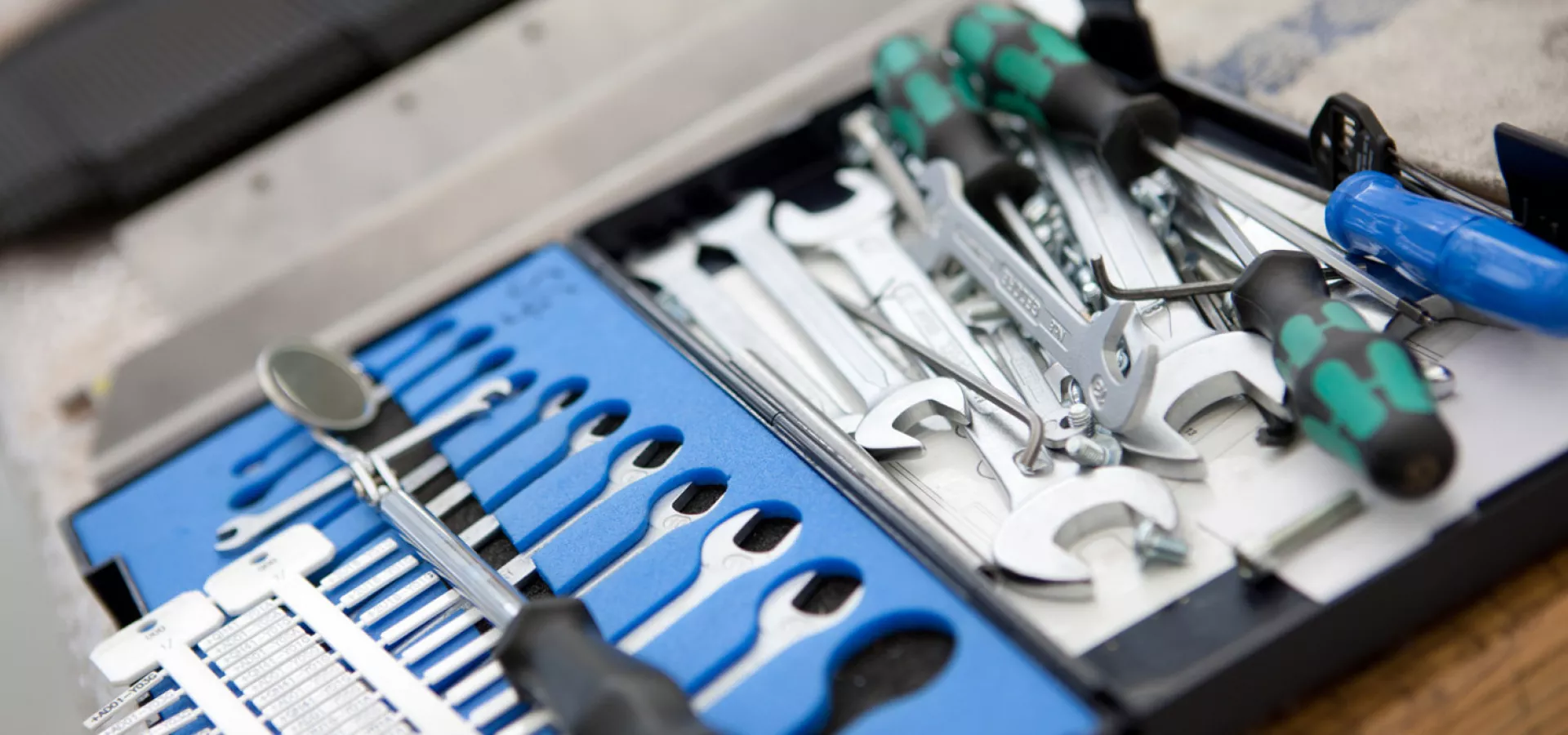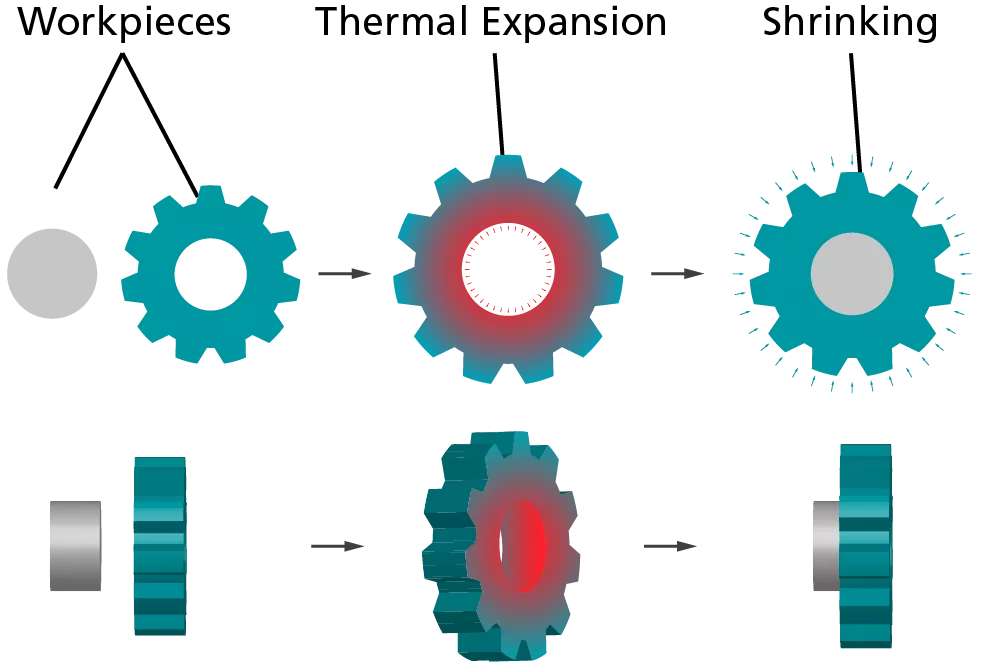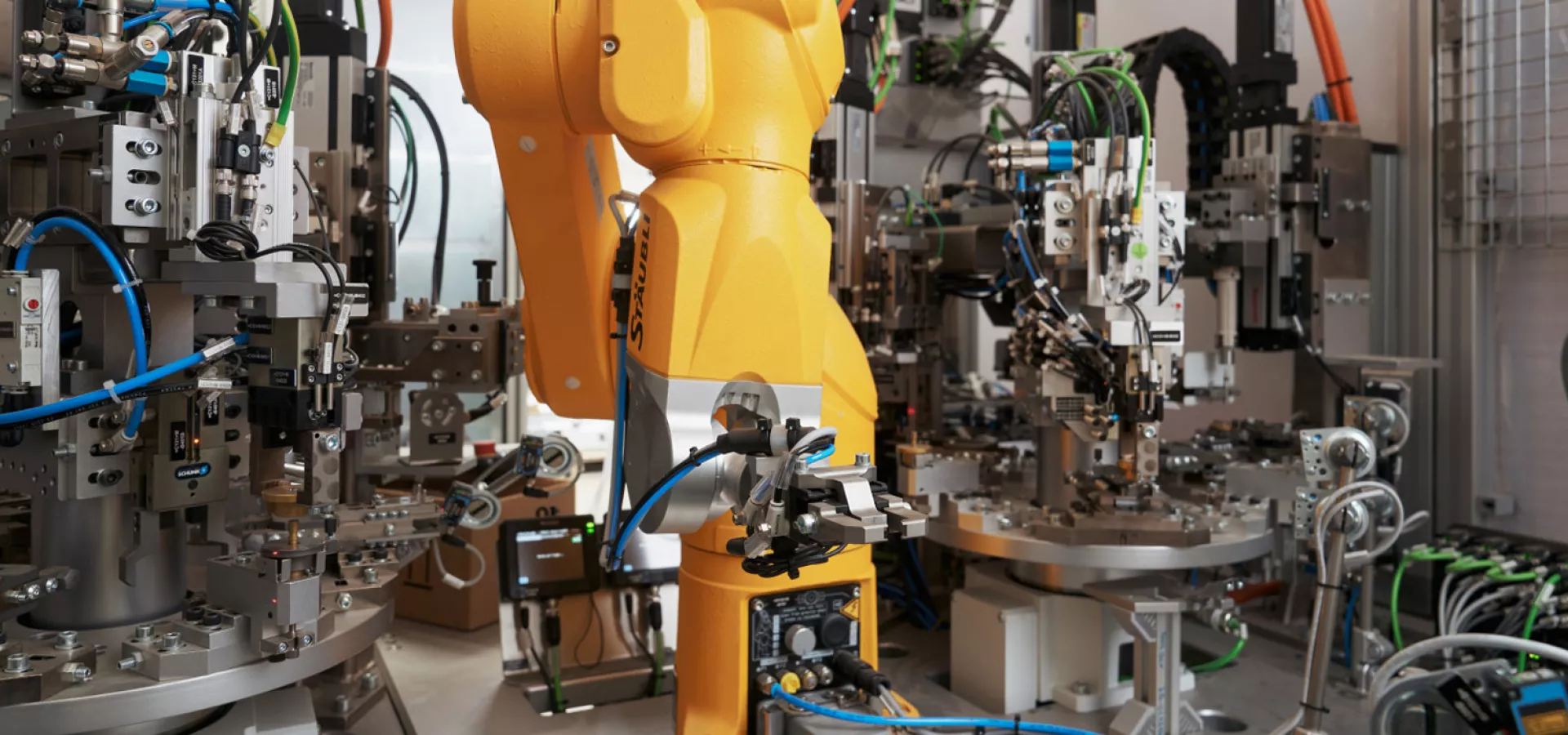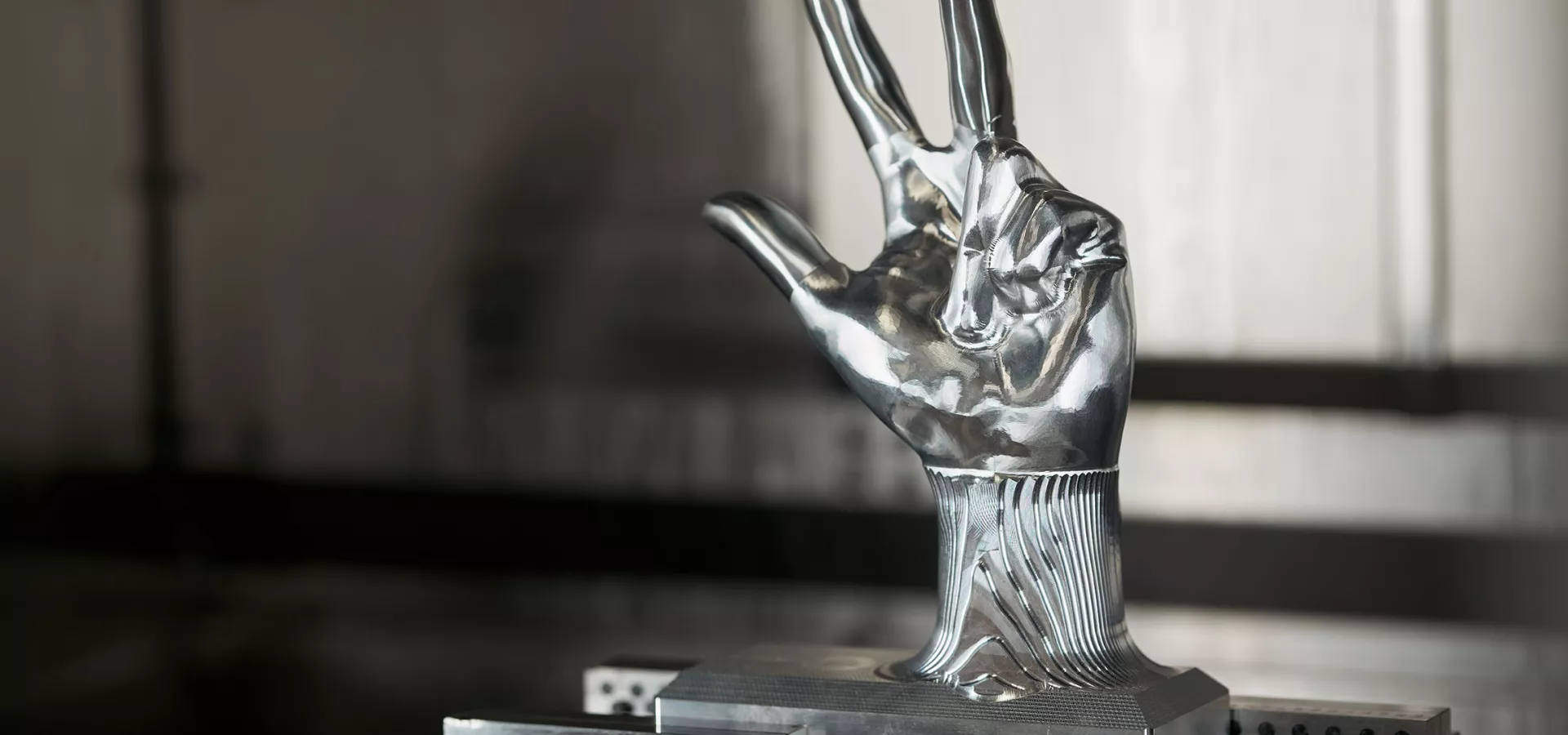
Shrink or shrink-on
Shrinking or shrinking on refers to a joining process that is based on the principle of thermal expansion. It is used particularly frequently in mechanical engineering and can be combined with other joining processes such as cold stretching or stretching. Shrinking or shrinking on creates seamless, permanent joints that can withstand even the most severe stresses. Accordingly, shrinking is proving to be a worthwhile alternative to joining processes in which material damage occurs (for example soldering, screwing or welding) in many industrial sectors.
How does shrinking or shrinking on work?
The industrial joining process of shrinking is based on a simple physical principle: certain materials expand at high temperatures and contract again when cold. To join two components together by shrinking, one of the two components is heated to the degree at which it expands. The expanded and heated component is then pulled over the unheated component and cooled. As the temperature drops, the previously heated component shrinks to its original size and encloses its joining partner permanently and firmly. This connection can only be loosened again when the component is heated again. It is important to note that only the outer, enclosing component is heated. If the enclosed component also expands, the shrink connection will not be released. This is usually achieved with the help of induction heating, because this can heat the components precisely and without damaging the material.

Where is shrinking used?
Shrinking is normally only used in conjunction with metal parts. Since it must be ensured that the material properties remain stable at the same level after expansion and cooling, other materials are not suitable for shrinking. Rings, gear wheels, shafts or pipes are often joined together by shrinking on. Special areas of application for this joining process can be found not only in mechanical engineering but also in shipbuilding, the automotive industry and aerospace technology. A classic example is the manufacture of railway wheels, where the wheel tyre and shaft are permanently and stably joined by means of shrink-fitting. Many tools are now also equipped with shrinking technology: In this way, for example, attachments can be precisely fastened in the chuck.
What are the advantages and disadvantages of shrinking?
Shrinking or shrink-fitting is a relatively simple joining process that does not require any additional aids such as adhesives. Furthermore, there is no damage to the material. The connection created during shrinking is stable and permanent, but can also be loosened again by renewed targeted heating of the joining partner. However, the process is only suitable for metals that can expand when heated without losing material properties. It is therefore essential to maintain the correct temperatures when shrinking. Moreover, uniform heating is crucial to avoid different degrees of expansion and thus material distortion.


